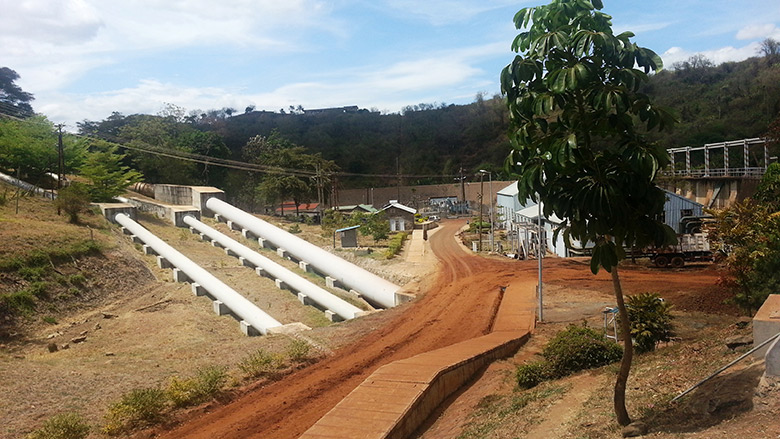DESCRIPTION
The Tana Hydro power plant, owned and operated by the Kenya Electricity Generating Company Limited (KenGen), is located about 120 km north of Nairobi. The rehabilitation of the existing power station, which lies at the end of the Masinga Reservoir and uses water from the Tana and Maragua rivers, is generating 67.7 GWh per year of renewable energy and greening the Kenyan electricity grid.
This project is earning carbon credits under the Clean Development Mechanism by avoiding the use of fossil fuels. The project was registered with the UNFCCC in October 2011 and issued its first 18,677 carbon credits in February 2015. The World Bank’s Community Development Carbon Fund is purchasing about 80,000 carbon credits from the project.
The project is using part of the carbon revenue to finance a community benefit plan (CBP) to help poor communities living close to the hydro plant who depend mainly on farming and livestock. The CBP, designed to address priority needs, was developed in consultation with the beneficiary communities, KenGen, regional chiefs, and local councils.
CONTEXT
Power demand in Kenya is rising considerably due to the country’s economic growth. This rising demand, combined with insufficient investment in new generation capacity, could result in blackouts during peak hours and unreliable supplies of electricity.
In addition, Kenya has in recent years experienced severe droughts that have led to low water levels in the reservoirs. This has negatively affecting hydropower generation. KenGen is Kenya’s major electricity company, supplying about 80 percent of all power consumed nationwide.
The company is investing in increased capcity to keep up with the rising demand for energy as well as to prepare for future droughts. The added revenue stream that carbon finance generates a welcome new source of finance.
RESULTS AND ACHIEVEMENTS
- As of April 2015, the project has issued a total of 18,677 carbon credits; this equates to a reduction of the same amount in metric tons of carbon dioxide.
- The project generates 67.7 GWh per year of renewable energy, contributing to greening the Kenyan electricity grid.
- The project is using carbon credits to finance a CBP for the local community in Tana.
- The CBP will fund infrastructure improvements, including the refurbishment of a school (benefiting 200 students) and access to potable water through rainwater collection. The school’s new concrete floors and doors will help to prevent jiggers, which many children suffer from.
- The CBP will prepare a wooded lot for 1,000 indigenous seedlings; this will ultimately help provide firewood for the school.
- The project will create temporary employment for over 50 local residents during construction.
